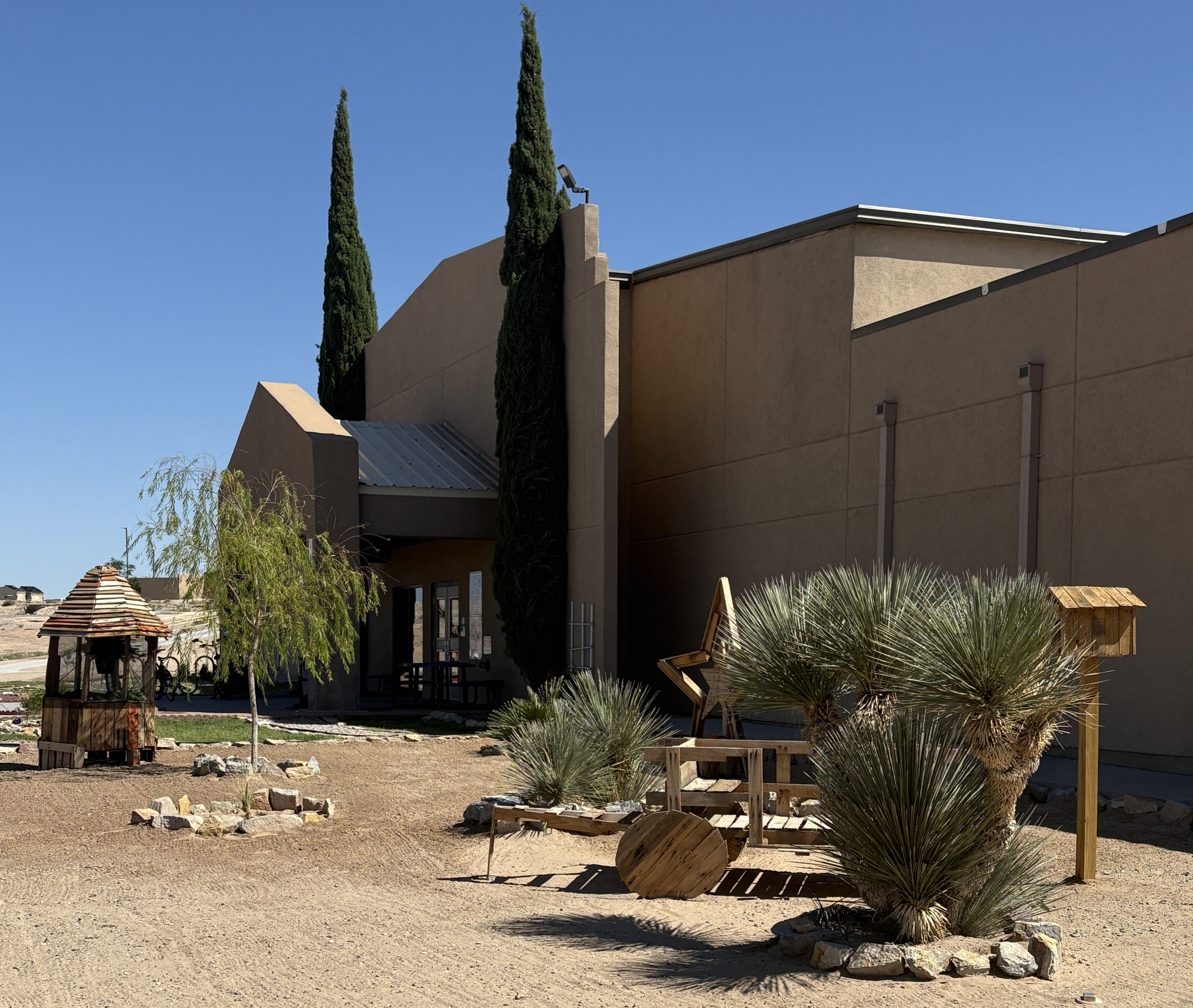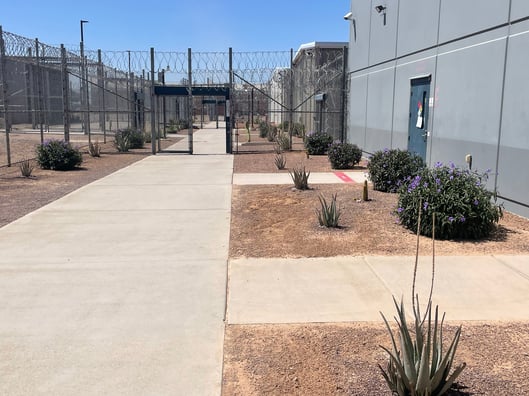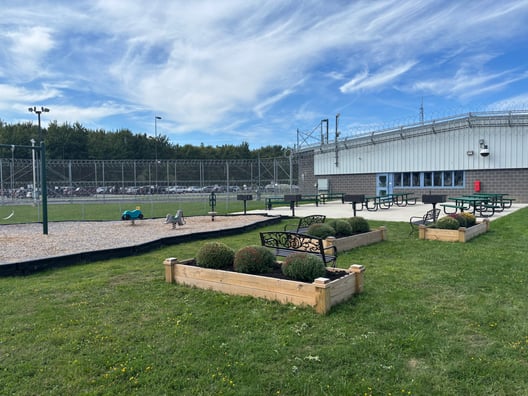
The changing colors of leaves in autumn, flowers blooming with the season, bees buzzing from plant to plant, and the relief of a tree’s shade blocking the blazing sun—these are just a few of nature’s gifts we experience outside.
For incarcerated individuals, many of these natural elements are absent from their surroundings. This is largely due to the safety measures inherently required to maintain correctional settings.
Yet CoreCivic’s Project Vista team is addressing this challenge innovatively, implementing spaces within facilities that mirror the outside world using a concept called biophilia—the incorporation of natural elements in the environment including natural light, circadian lighting, plants, vegetation, colors and color patterns, natural materials in finishes and facades, as well as features that mimic natural forms and patterns.
Nearly every project has incorporated some element of biophilia. However, these design changes have preserved safety and security all while delivering stress-reducing natural elements that have historically been absent from correctional environments in the United States.
Biophilia's benefits to individual wellness extend beyond those in our care: Staff well-being has improved, too. Afterall, who doesn't enjoy walking on a shaded path with blooming flowers and luscious greenery on their lunch break?
Landscaping is a type of biophilic concept that has taken root at several CoreCivic facilities. While improved landscaping projects have been underway at facilities for many years, CoreCivic's Project Vista is helping take these already-in-motion efforts a step further across all CoreCivic facilities.
A resident horticulture program at Red Rock Correctional Center in Eloy, Arizona, has helped maintain landscaping in key areas of the facility. The facility's greenhouse is full of life, color, and produce, giving residents access to the normalcy of having dirt under their fingernails as they work the earth. The plant life, including cacti and plants that thrive regionally, sprawl beautifully on the grounds of the facility.

At Torrance County Detention Facility in Estancia, New Mexico, at-risk individuals under additional supervision have an improved window view. A faux rock garden that features greenery and boulders replaces the typical view of blank walls and a bleak, bare ground outside. While an observation cell must be kept relatively empty for the protection of life, the view towards nature breaks up the monotony of the institutional setting, promoting wellbeing.
At El Paso Transitional Center in El Paso, Texas, the facility's entryway now features desert vegetation and hardscapes, thanks to the help of staff and residents who gave their time to install these improvements, allowing staff and residents to take a sense of ownership and pride in their environment.
Another important goal of landscape improvements at CoreCivic facilities is enhancing the visitation experience for families and loved ones. Visitation is a vital component of rehabilitation, as it provides incarcerated individuals with one of their few opportunities to maintain meaningful connections while serving their sentences. For this reason, the entire visitation experience should be as positive as possible for both residents and their visitors.
At Lake Erie Correctional Institution in Conneaut, Ohio, raised flower beds, benches and a playground have been installed in the facility's new visitation park. Residents can now experience the normalcy of pushing their child on a swing in a park setting or sitting with their loved ones on a park bench among flowers and other plants as they would in the free world.

While the aesthetic value of nature is undeniable, plants also serve a deeper purpose inside correctional settings: The changes that flowers, leaves, birds, and insects undergo through the seasons provide markers of time—something incarcerated individuals are acutely aware of. Watching the sun’s movement shift the shade under a tree, for instance, becomes a tangible reminder of time moving forward.
The underlying principle of biophilic design in normalization is to restore aspects of a natural environment that incarceration has removed. Landscaping is one of many biophilic concepts used by the Project Vista team to strengthen this vital connection with nature. Rehabilitation progresses more effectively when one’s surroundings reflect peace and safety—as much as possible—within facility walls.
Improved landscapes are one step in the direction of CoreCivic's continued efforts to provide trauma-informed spaces that give individuals undergoing rehabilitation a softer, warmer, and brighter environment to do the most important work: heal.
